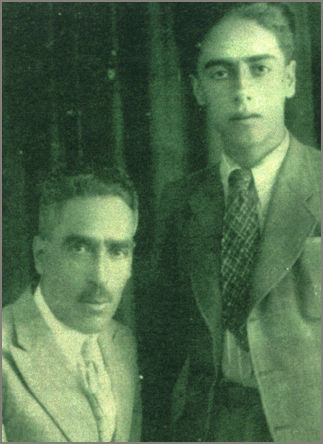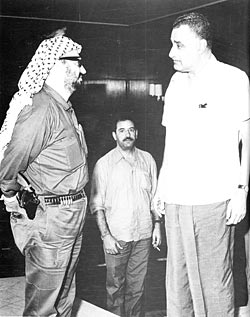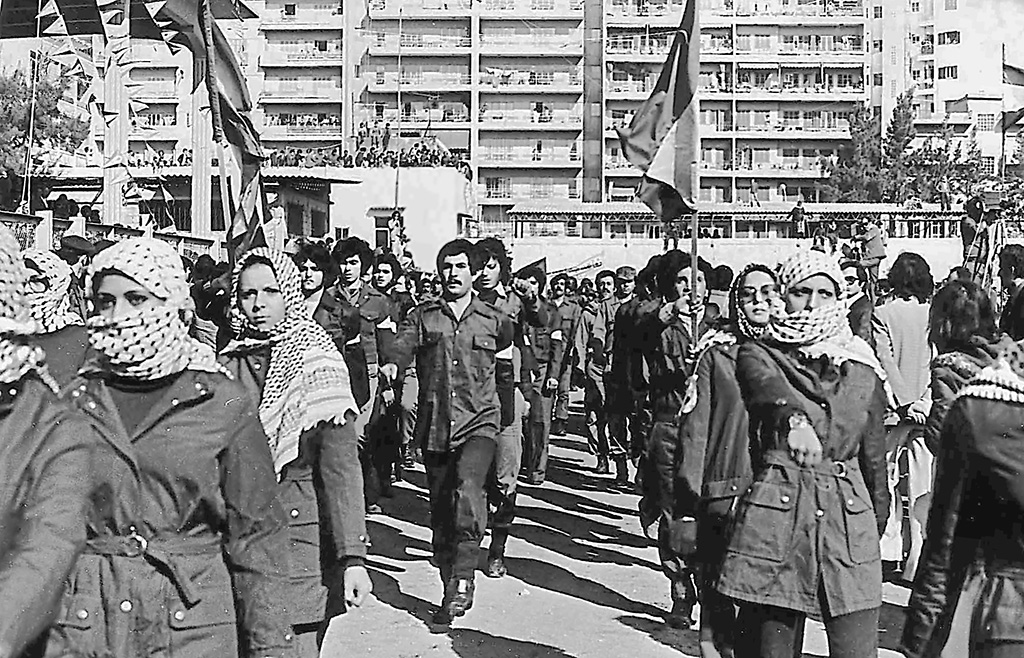|
Ajlun Offensive
The Ajlun offensive, also known as the Battle of the Scrubland, was a military offensive launched by the Jordanian army against Palestinian fedayeen, fedayeen bases in the Ajlun area the fedayeen's last stronghold. Background In September 1970, heavy fighting erupted between Jordanian forces and the Palestinian fedayeen. At the urging of the Arab heads of state, Hussein bin Talal and Yasser Arafat signed the cease-fire agreement in Cairo on 27 September. The agreement called for rapid withdrawal of the guerrilla forces from Jordanian cities and towns to positions "appropriate" for continuing the battle with Israel and for the release of prisoners by both sides. The offensive On 12 July, the Jordanian government ordered the trapped Fedayeen to evacuate Tal al-Aqra, the strategic location. The guerrillas did not respond to the order. On the morning of 13 July, the Jordanian army began its offensive with intensive artillery bombardment reinforced by the air force. The force beg ... [...More Info...] [...Related Items...] OR: [Wikipedia] [Google] [Baidu] |
Black September
Black September ( ar, أيلول الأسود; ''Aylūl Al-Aswad''), also known as the Jordanian Civil War, was a conflict fought in the Hashemite Kingdom of Jordan between the Jordanian Armed Forces (JAF), under the leadership of King Hussein, and the Palestine Liberation Organization (PLO), under the leadership of Yasser Arafat, primarily between 16 and 27 September 1970, with certain aspects of the conflict continuing until 17 July 1971. After Jordan lost control of the West Bank to Israel in 1967, Palestinian fighters known as fedayeen moved their bases to Jordan and stepped up their attacks on Israel and Israeli-occupied territories. One Israeli retaliation on a PLO camp based in Karameh, a Jordanian town along the border with the West Bank, developed into a full-scale battle. The perceived joint Jordanian-Palestinian victory against Israel during the 1968 Battle of Karameh led to an upsurge in Arab support for the fedayeen in Jordan, in both new recruits and financial ... [...More Info...] [...Related Items...] OR: [Wikipedia] [Google] [Baidu] |
Jerash
Jerash ( ar, جرش ''Ǧaraš''; grc, Γέρασα ''Gérasa'') is a city in northern Jordan. The city is the administrative center of the Jerash Governorate, and has a population of 50,745 as of 2015. It is located north of the capital city Amman. The earliest evidence of settlement in Jerash is in a Neolithic site known as Tal Abu Sowan, where rare human remains dating to around 7500 BC were uncovered. Jerash flourished during the Greek, Hellenistic, Roman, and Byzantine periods until the mid-eighth century CE, when the 749 Galilee earthquake destroyed large parts of it, while subsequent earthquakes contributed to additional destruction. However, in the year 1120, Zahir ad-Din Toghtekin, atabeg of Damascus ordered a garrison of forty men to build up a fort in an unknown site of the ruins of the ancient city, likely the highest spot of the city walls in the north-eastern hills. It was captured in 1121 by Baldwin II, King of Jerusalem, and utterly destroyed. Then, the Crusad ... [...More Info...] [...Related Items...] OR: [Wikipedia] [Google] [Baidu] |
Ajlun
Ajloun ( ar, عجلون, ''‘Ajlūn''), also spelled Ajlun, is the capital town of the Ajloun Governorate, a hilly town in the north of Jordan, located 76 kilometers (around 47 miles) north west of Amman. It is noted for its impressive ruins of the 12th-century Ajloun Castle. The Ajlun Governorate has a population of over 176,080 widespread in 27 villages and towns over an area of about 420 km². The population is mainly composed of the following Muslim tribes: Al-Gharaibeh, AlQudah, Al-Share, Al-Zghoul, Al-Momani, Al-Smadi, Al-Shwayyat, Al-Freihat, Al-Khatatbah, Alnawateer, Al-Karraz, and others. Muqattash, Haddad, Iwais, Eisouh and Rabadi are the main Christian tribes in Ajloun. Although Christians are a minority in the overall governorate, they form about more than half of the population in Ajloun city; most Christians reside in Ajloun city along with Muslims of the Al-Smadi tribe. Other tribes are distributed in the other districts of the governorate. Ajloun Governorate has f ... [...More Info...] [...Related Items...] OR: [Wikipedia] [Google] [Baidu] |
Jordan
Jordan ( ar, الأردن; tr. ' ), officially the Hashemite Kingdom of Jordan,; tr. ' is a country in Western Asia. It is situated at the crossroads of Asia, Africa, and Europe, within the Levant region, on the East Bank of the Jordan River. Jordan is bordered by Saudi Arabia to the south and east, Iraq to the northeast, Syria to the north, and the Palestinian West Bank, Israel, and the Dead Sea to the west. It has a coastline in its southwest on the Gulf of Aqaba's Red Sea, which separates Jordan from Egypt. Amman is Jordan's capital and largest city, as well as its economic, political, and cultural centre. Modern-day Jordan has been inhabited by humans since the Paleolithic period. Three stable kingdoms emerged there at the end of the Bronze Age: Ammon, Moab and Edom. In the third century BC, the Arab Nabataeans established their Kingdom with Petra as the capital. Later rulers of the Transjordan region include the Assyrian, Babylonian, Roman, Byzantine, Rashidun ... [...More Info...] [...Related Items...] OR: [Wikipedia] [Google] [Baidu] |
Wasfi Al-Tal
Wasfi Tal ( ar, وصفي التل; also known as Wasfi Tell; 19 January 1919 – 28 November 1971) was a Jordanian politician, statesman and general. He served as the 15th Prime Minister of Jordan for three separate terms, 1962–63, 1965–67 and 1970 until his assassination in 1971. Tal was born in Turkey to prominent Jordanian poet Mustafa Wahbi Tal. He moved to Jordan at 5 years old. He received his education in Al-Salt, later continuing his education at the American University of Beirut in 1941. He then joined the British Army in Mandatory Palestine after being trained in a British-run military academy, and joined the irregular Arab Liberation Army to fight against Israel during the 1948 Arab–Israeli War. Following the war, he served various positions in the Jordanian government, rising to higher positions after his abilities captured King Hussein's attention. His first tenure as prime minister in 1962 was short-lived, he resigned in 1963 over widespread criticism of his ... [...More Info...] [...Related Items...] OR: [Wikipedia] [Google] [Baidu] |
Khalil Al-Wazir
Khalil Ibrahim al-Wazir Standardized Arabic transliteration: '' / / '' ( ar, خليل إبراهيم الوزير, also known by his '' kunya'' Abu JihadStandardized Arabic transliteration: ' —"Jihad's Father"; 10 October 1935 – 16 April 1988) was a Palestinian leader and co-founder of the nationalist party Fatah. As a top aide of Palestine Liberation Organization (PLO) Chairman Yasser Arafat, al-Wazir had considerable influence in Fatah's military activities, eventually becoming the commander of Fatah's armed wing al-Assifa. Al-Wazir became a refugee when his family was expelled from Ramla during the 1948 Arab–Israeli War, and began leading a minor ''fedayeen'' force in the Gaza Strip. In the early 1960s he established connections for Fatah with Communist regimes and prominent third-world leaders. He opened Fatah's first bureau in Algeria. He played an important role in the 1970–71 Black September clashes in Jordan, by supplying besieged Palestinian fighters with weap ... [...More Info...] [...Related Items...] OR: [Wikipedia] [Google] [Baidu] |
Abu Ali Iyad
Walid Ahmad Nimr ( ar, وليد أحمد نمر ; 1934 – July 23, 1971), better known by his ''nom de guerre'' Abu Ali Iyad ( ar, أبو علي إياد), was a senior Palestinian field commander based in Syria and Jordan during the 1960s and early 1970s. After a career of teaching in the West Bank, Iraq, Saudi Arabia and Algeria, Abu Ali Iyad was recruited into the paramilitary group, Fatah, by Khalil al-Wazir in 1964 after graduating from an Algerian military training course. A year later, he became one of Fatah's first leaders in Syria along with al-Wazir and Yasser Arafat. During his time there, Abu Ali Iyad gained a position on the group's top political body, supervised its main guerrilla training camp in Daraa and set up a military intelligence headquarters. As a Fatah field commander, he fought Israeli forces at the Battle of Karameh, gaining a reputation as an unyielding commander. Abu Ali Iyad was also a leading organizer and participant in guerrilla raids against I ... [...More Info...] [...Related Items...] OR: [Wikipedia] [Google] [Baidu] |
Royal Jordanian Army
The Royal Jordanian Army (Arabic: القوّات البرية الاردنيّة; ) is the ground force branch of the Jordanian Armed Forces (JAF). It draws its origins from units such as the Arab Legion, formed in the British Mandate of Transjordan in the 1920s. It has seen combat against Israel in 1948, 1956, 1967, and 1973. The Army also fought the Syrians and the PLO during Black September in 1970. History Origins – 1920–1947 On 10 June 1916, Sherif Hussien Bin Ali prince of Mecca, officially declared the Great Arab Revolt against the Ottoman Empire to rid Arab nations of the Turkish rule that had lasted about four centuries. On 21 November 1920, Prince Abdullah Bin Al-Hussien (later King) arrived at Ma'an, where he expressed his resolution to drive out the Turkish forces from Syria. Later, on 5 December 1920, he proclaimed himself as deputy king in Syria and appealed to members of the Al-Faissali army to join his forces in Ma'an. His calls received much att ... [...More Info...] [...Related Items...] OR: [Wikipedia] [Google] [Baidu] |
Al-'Asifah
Al-`Asifah ( ar, العاصفة, , ''the Storm'') was the mainstream armed wing of the Palestinian political party and militant group Fatah. Al-Asifah was jointly led by Yasser Arafat and Khalil Wazir. History On New Year's Day 1965, Fatah announced the formation of its military wing, called the al-Asifah forces, in Military Communique No. 1. This statement reported Asifah's first guerrilla attacks against Israel and officially declared the launch of the armed struggle for Palestinian independence. At the time, Fatah was far from ready for sustained military activity. Although al-Asifah was rooted in the organized guerrilla movements known as the Fedayeen, it had few trained volunteers and even fewer serviceable arms. Its first attempted raid occurred on December 31, 1964, but was hindered when the fighters were detained by the Lebanese Armed Forces while planning to demolish a pumping station of the Israeli national water carrier. The following night a second al-Asifah unit i ... [...More Info...] [...Related Items...] OR: [Wikipedia] [Google] [Baidu] |
Military Offensive
An offensive is a military operation that seeks through an aggressive projection of armed forces to occupy territory, gain an objective or achieve some larger strategic, operational, or tactical goal. Another term for an offensive often used by the media is "invasion", or the more general "attack". An offensive is a conduct of combat operations that seek to achieve only some of the objectives of the strategy being pursued in the theatre as a whole. Commonly an offensive is carried out by one or more divisions, numbering between 10 and 30,000 troops as part of a combined arms manoeuvre. The offensive was considered a pre-eminent means of producing victory, although with the recognition of a defensive phase at some stage of the execution. A quick guide to the size or scope of the offensive is to consider the number of troops involved in the side initiating the offensive. Offensives are largely conducted as a means to secure initiative in a confrontation between opponents. They ... [...More Info...] [...Related Items...] OR: [Wikipedia] [Google] [Baidu] |
Jordanian Army
The Royal Jordanian Army (Arabic: القوّات البرية الاردنيّة; ) is the ground force branch of the Jordanian Armed Forces (JAF). It draws its origins from units such as the Arab Legion, formed in the British Mandate of Transjordan in the 1920s. It has seen combat against Israel in 1948, 1956, 1967, and 1973. The Army also fought the Syrians and the PLO during Black September in 1970. History Origins – 1920–1947 On 10 June 1916, Sherif Hussien Bin Ali prince of Mecca, officially declared the Great Arab Revolt against the Ottoman Empire to rid Arab nations of the Turkish rule that had lasted about four centuries. On 21 November 1920, Prince Abdullah Bin Al-Hussien (later King) arrived at Ma'an, where he expressed his resolution to drive out the Turkish forces from Syria. Later, on 5 December 1920, he proclaimed himself as deputy king in Syria and appealed to members of the Al-Faissali army to join his forces in Ma'an. His calls received much att ... [...More Info...] [...Related Items...] OR: [Wikipedia] [Google] [Baidu] |
Palestinian Fedayeen
Palestinian fedayeen (from the Arabic ''fidā'ī'', plural ''fidā'iyūn'', فدائيون) are militants or guerrillas of a nationalist orientation from among the Palestinian people. Most Palestinians consider the fedayeen to be " freedom fighters", while most Israelis consider them to be "terrorists". Considered symbols of the Palestinian national movement, the Palestinian fedayeen drew inspiration from guerrilla movements in Vietnam, China, Algeria and Latin America. The ideology of the Palestinian fedayeen was mainly left-wing nationalist, socialist or communist, and their proclaimed purpose was to defeat Zionism, claim Palestine and establish it as "a secular, democratic, nonsectarian state". The meaning of secular, democratic and non-sectarian, however, greatly diverged among fedayeen factions. Emerging from among the Palestinian refugees who fled or were expelled from their villages as a result of the 1948 Arab–Israeli War,Almog, 2003, p. 20. in the mid-1950s the fe ... [...More Info...] [...Related Items...] OR: [Wikipedia] [Google] [Baidu] |
.jpg)




